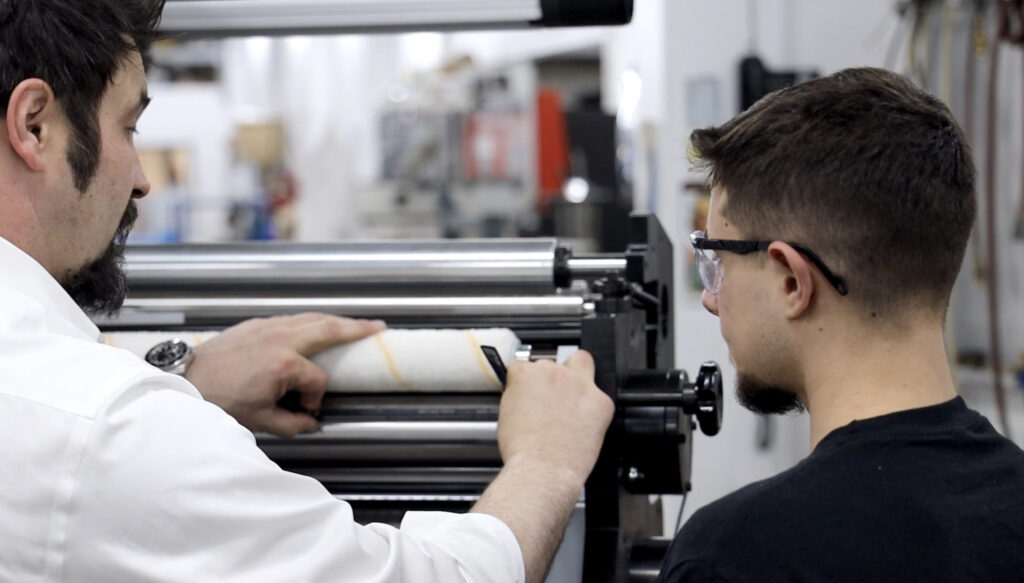The Internet of Things, IoT, refers to the billions of devices worldwide that are all connected to the Internet, collecting and sharing data. A wide range of products and items can be made part of the IoT with computer chips or RFID tags and wireless networks. Connecting objects with sensors that add digital intelligence to devices enables them to communicate real-time data without human intervention.
Objects as small as pills up to large items like driverless vehicles can all be IoT devices. In some cases, large IoT objects contain various smaller IoT components, such as thousands of sensors and engines that continually transmit data to ensure safe and efficient operation.
Radio-Frequency Identification (RFID) Technology in IoT
Radio-Frequency Identification (RFID) inlays are commonly used in manufacturing to track and identify products and materials. RFID tags even help to identify people as they are located in the most recent biometric passports. RFID technology plays an important role in the IoT in many applications.
How Does RFID Work?
RFID technology has been around for more than 50 years, using radio waves and electromagnetic fields to transmit data for the identification of various products and items. An RFID system consists of three basic components:
RFID tags – barcode scanning at a supermarket, for example, is an example of passive RFID tags which activate easily without their own power supply. Conversely, active RFID tags contain an antenna or microchip and sensors.
RFID reader – an RFID reader uses radio waves to identify and transmit data from an RFID tag to an application or software. A barcode scanner is not an RFID reader without an RFID module. All RFID readers, however, can read barcodes.
RFID Software/Application – RFID software or a mobile app monitor and control RFID tags.
RFID Devices In IoT Applications
RFID technology is used along with intelligent sensors and cameras to locate and identify items. Some applications where RFID insertion is utilized as a part of the IoT include:
Healthcare – some healthcare systems utilize RFID implants for patients in intensive care to automatically and continuously record and update health information.
Smart homes – RFID technology turns otherwise “dumb” objects into “smart” objects. One example of this is Google’s Nest Tag, an RFID-driven, inexpensive keychain that controls Google’s Nest alarm system.
Transportation – RFID tags can be used to help control traffic and read passenger data and are used in various cities around the world.
The low cost of RFID systems makes them a good value for both industrial and consumer IoT.
Tamarack Offers RFID Inlay Insertion Systems
Tamarack® Products is a leading manufacturer of web finishing equipment, including RFID inlay insertion systems, window patching equipment, and more. Tamarack® designs, engineers, and manufactures high-quality machinery customized to meet specific customer requirements with flexible and modular solutions.
Tamarack’s MVW Offline RFID Inlay Insertion Equipment produces RFID tags, tickets, and labels in a completely offline platform, configured to meet specific requirements. The MVW by Tamarack® includes a re-registration system to ensure that the inlay is placed in register to the print and is designed to inlay into a pre-printed web, with dry or wet inlays or both.
The MVW Inline RFID Inlay Insertion Equipment by Tamarack® produces RFID tags, tickets, and labels on an existing or new flexo press, in a single pass. The MVW Inline RFID is typically installed in between the press print and finishing stations and can insert dry or wet inlays.
Tamarack® Products is a leading manufacturer of high-quality in-line and off-line web finishing equipment. We offer flexibility with modular solutions to many industries, including direct mail providers, forms and label makers, and RFID tag producers. Contact us to learn more about our RFID inlay insertion equipment solutions.





